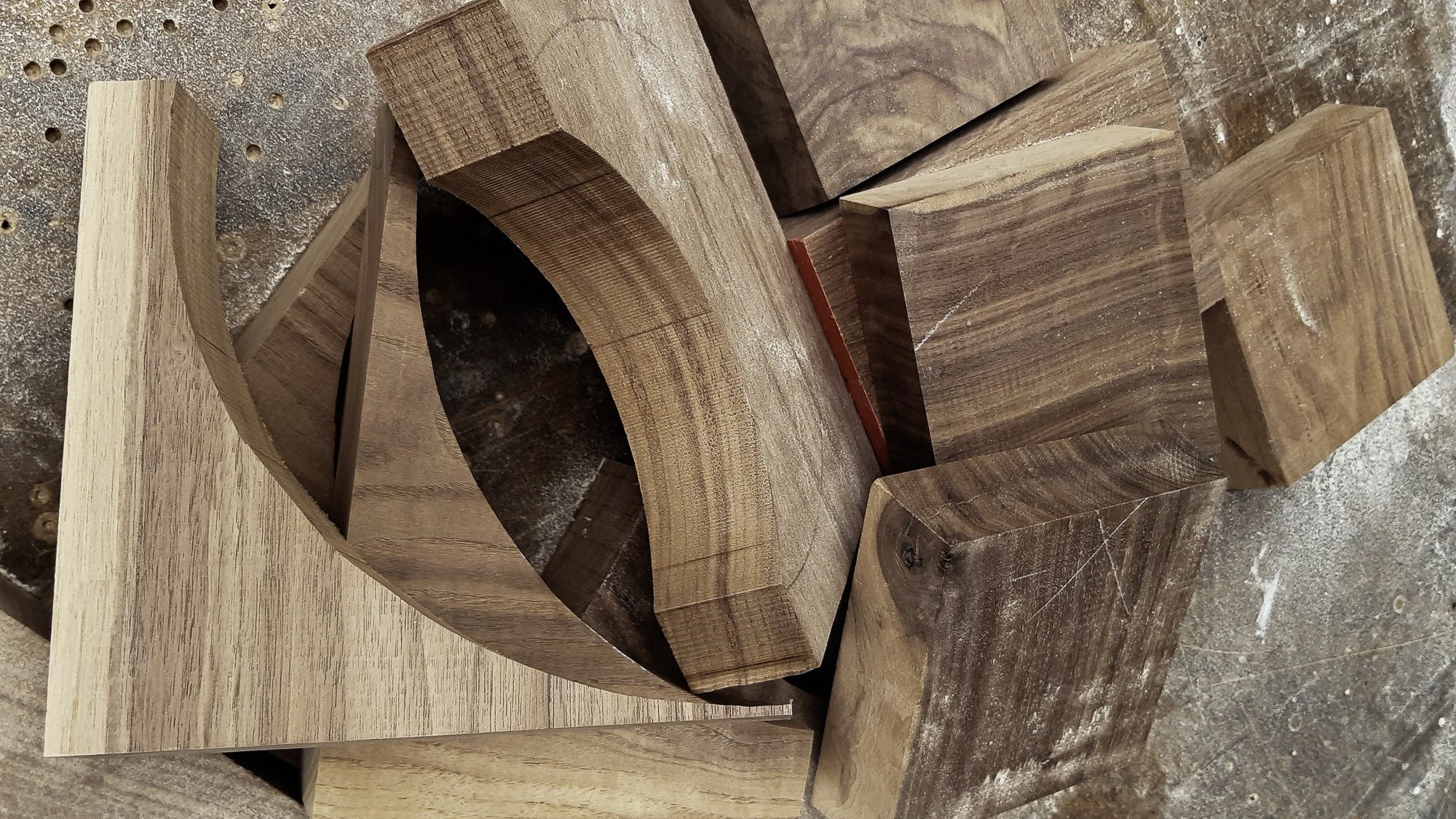What a Workshop’s Scrap Bin
Taught Me About Design
18.05.25
What struck me most on my first day as an apprentice cabinet maker was the amount of off-cut materials and waste a workshop generates. This was 10 years ago when I was setting out on a career path as a furniture maker and designer. In front of the workshop, there was a container we filled up with wood scraps over a period of two weeks. It would get collected, emptied at a recycling centre, and then returned to be filled up again. To me, all that wood looked perfectly fine. I was surprised by how much of it we discarded. However, I soon began to understand why we threw all that material away. Most of it was off-cuts that were too short in length to make the kind of items we were, cabinets, tables and doors. There were also the ends of wood planks, which often were splintered and cracked. If a workshop were to collect and keep all of its off-cut material instead of throwing it away, it would not be long until the place would be overflowing. The useless waste would likely create frustration and increase risk exposure. Random stuff in a workshop is clutter that can potentially become the figurative banana peel, causing much harm in a room equipped with sharp tools and hazardous chemicals.
There are other reasons besides the safety of limbs and lives for throwing away off-cut materials. It takes up a lot of space, and hoarding materials that have no purpose is useless. It is also a cultural habit—we have gotten so used to abundance that an item has less value to us than ever before. Things are made cheap, fast, and often it is more economical to throw away and buy new rather than to fix or make use of. The mountains of discarded fast fashion clothes in the Atacama Desert, Chile, come to mind, or the piles of ceramic waste in Jingdezhen, China.
[Martin Bernetti/AFP]
[Yi Design Group]
What are we to do with all that overflow of stuff? That stuff is looked upon as worthless and therefore thrown away. Waste from manufacturing is a very complex problem that, ideally, would be considered from the beginning when designing a factory. There are innovators and companies that are working on solving the waste issue at scale. For example, Yi Design Group, tackling the ceramic waste in Jingdezhen, “collects waste in collaboration with local producers and uses their new binding material to create ceramic tiles with a lower carbon emission than traditional building materials.” Another example is British Sugar, which has designed its manufacturing processes in a way that creates next to zero waste. They “operate an advanced manufacturing model that avoids waste by turning process outputs into inputs for a wide range of co-products.”
Anaerobic digestion plant breaks down pressed sugar beet pulp to create biogas that becomes a energy source for creating green electricity. [British Sugar]
Yi Brick is 100% made from recycled ceramic waste. [Yi Design Group]
On a small scale, however, the waste issue is much easier to grapple with—and a ripe opportunity for creatives. Having observed this issue for years, I went about making an object that would give these off-cut materials new life and purpose instead of being tossed in the bin. Before me, I had good-quality materials in various lengths and thicknesses, the fabrics had irregular cutting edges. For a production that is making a predetermined design, this kind of material is difficult to work with. But for an individual who practices continuous exploration, it is a goldmine. I decided to embrace the materials' imperfect shapes and small sizes, and so the first Akin stool started to take shape. Artists and designers have been using scrap material in projects for decades for exactly this reason. The material does not fit into the model of standardised manufacturing, but it nestles perfectly into the creative process of a fluid mind.
Akin stools 1, 2 and 3. [Tomas Thorsson]





